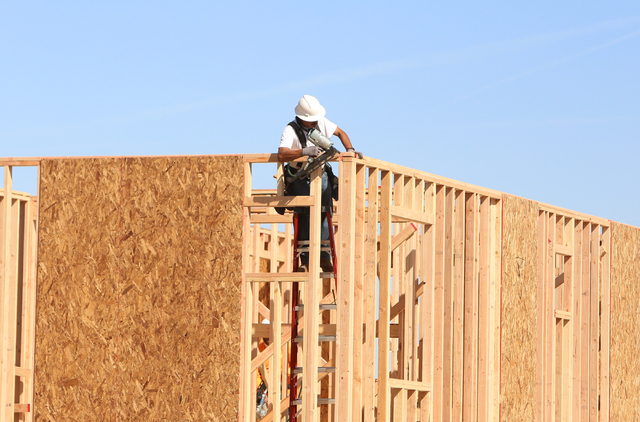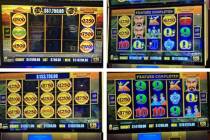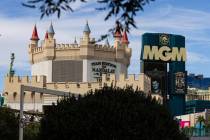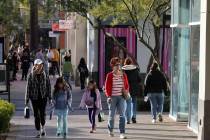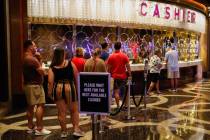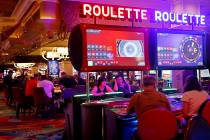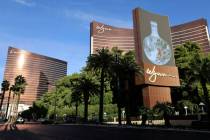Report sees signs of growth in gaming, soft spots in commercial sector
Southern Nevada’s economy is showing continued signs of growth in gaming, tourism and other areas, the latest figures in a University of Nevada, Las Vegas study indicate.
The indicators came as the UNLV Lee Business School Center for Business and Economic Research released its CBER Indexes for Nevada and Southern Nevada on Thursday.
According to CBER figures for Southern Nevada, taxable sales increased by 5.6 percent to almost $3.3 billion in December 2015 compared with about $3.1 billion in December 2014; the gross gaming revenues of almost $800.5 million was a 2.9 percent increase from about $780 million; and the nonfarm employment of 925,000 people was a 2.4 percent increase from 903,000 people. The hotel and motel occupancy rate of 89.3 percent in January was a 3.1 percent increase when compared with January 2015.
The taxable sales, gross gaming revenues and nonfarm employment compose what the CBER calls the Coincident Index. The index measures the ups and downs of the state’s economy.
“We are headed in a positive direction,” CBER Director Stephen M. Miller said. “There is no signal of a recession or downturn in the future. Things are looking positive for 2016.”
The Coincident Index for Southern Nevada increased by 2.6 percent in December 2015 compared with the same month in 2014. But it declined by 0.3 percent from November 2015 to last December. The decline from month to month isn’t a concern unless it occurs for at least four months, Miller said.
Another positive sign for the economy was the 7.3 percent increase in passenger traffic at McCarran International Airport in January 2016 compared with January 2015. More than 3.9 million passengers traveled through the airport this January.
“We have had significant increases for the past 14 months straight,” said Christine Crews, a spokeswoman for McCarran.
In 2015, 45.4 million passengers traveled through McCarran, making it the third-busiest year in the airport’s history, she said.
The passenger numbers, housing and commercial permits, initial unemployment claims, Moody’s Real Baa bond rate and the Standard & Poor’s 500 make up what the CBER calls the Leading Index. The index for Southern Nevada increased by 0.9 percent in January 2016 compared with January 2015, but it declined by 0.6 percent between last December and this January.
The Southern Nevada Leading Index was 104.6 last December, and it was 104 in January. Though the index dropped in January, it was still higher than it was in January 2015 when it was 103.
The construction sector in Southern Nevada has grown as employment in the field has increased by 10.8 percent in January to 54,484 people compared with January 2015. This January, 993 housing permits and 22 commercial permits were issued. The housing permits were a 77.2 percent increase compared with January 2015.
Besides commercial permits, which were down 2 percent, the report also noted that unemployment claims increased 11.3 percent in January 2016 compared with January 2015, and the Standard and Poor’s stock market index dropped by 5.2 percent.
“There is concern in that (commercial) sector that not enough permits are being pulled,” Miller said. “The vacancy rate for offices is about 23 or 24 percent in Clark County.”
Miller said the reasons that unemployment claims have increased while nonfarm employment has risen is because people who gave up looking for work are searching again and because of turnover in the job market.
Statewide there were signs of an economic growth too.
Gross gaming revenues in the Silver State increased by 2.7 percent to more than $929 million in December 2015 compared with December 2014; taxable sales increased by 5.4 percent to about $4.4 billion; and nonfarm employment rose by 2.3 percent to more than 1.26 million people. Airline passenger numbers increased by 7.1 percent in January compared to January 2015.
The Coincident Index for Nevada increased by 2.5 percent in December 2015 compared with December 2014, but it declined by 0.2 percent between last December and January.




